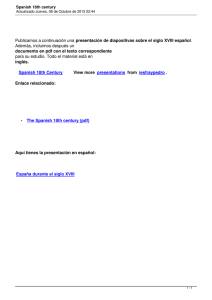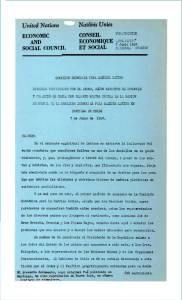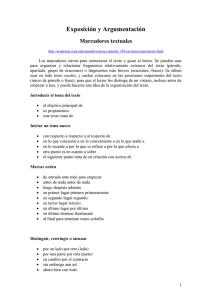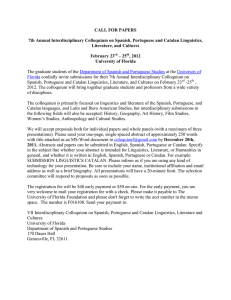Anton Granvik:
Anuncio
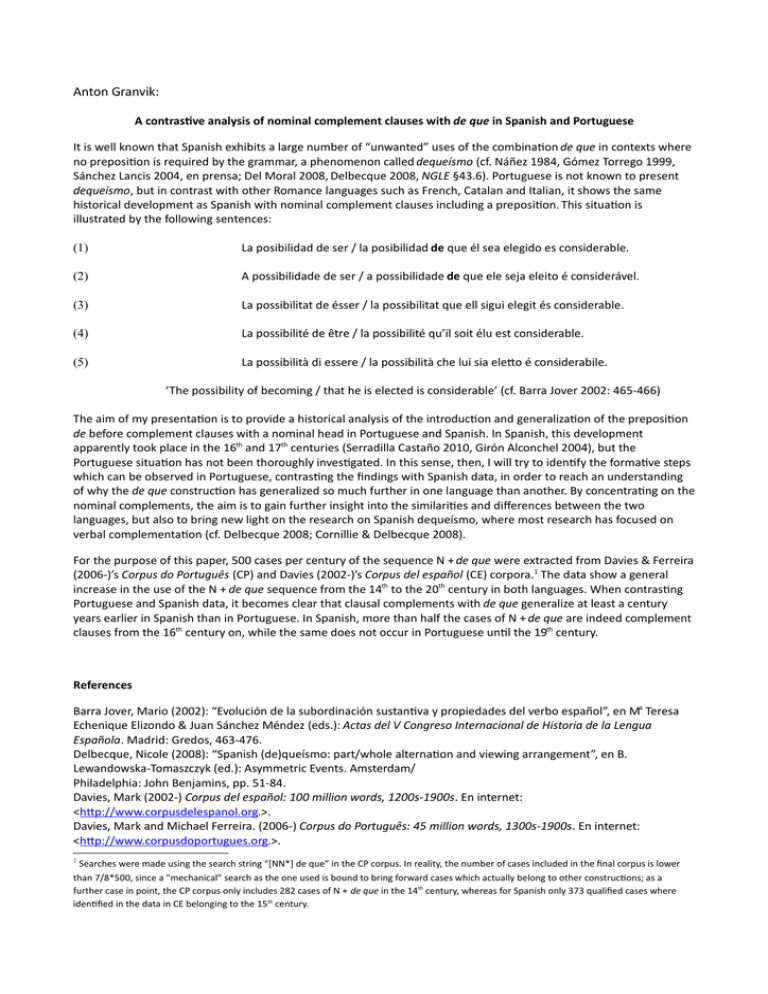
Anton Granvik: A contrastive analysis of nominal complement clauses with de que in Spanish and Portuguese It is well known that Spanish exhibits a large number of “unwanted” uses of the combination de que in contexts where no preposition is required by the grammar, a phenomenon called dequeísmo (cf. Náñez 1984, Gómez Torrego 1999, Sánchez Lancis 2004, en prensa; Del Moral 2008, Delbecque 2008, NGLE §43.6). Portuguese is not known to present dequeísmo, but in contrast with other Romance languages such as French, Catalan and Italian, it shows the same historical development as Spanish with nominal complement clauses including a preposition. This situation is illustrated by the following sentences: (1) La posibilidad de ser / la posibilidad de que él sea elegido es considerable. (2) A possibilidade de ser / a possibilidade de que ele seja eleito é considerável. (3) La possibilitat de ésser / la possibilitat que ell sigui elegit és considerable. (4) La possibilité de être / la possibilité qu’il soit élu est considerable. (5) La possibilità di essere / la possibilità che lui sia eletto é considerabile. ‘The possibility of becoming / that he is elected is considerable’ (cf. Barra Jover 2002: 465-466) The aim of my presentation is to provide a historical analysis of the introduction and generalization of the preposition de before complement clauses with a nominal head in Portuguese and Spanish. In Spanish, this development apparently took place in the 16th and 17th centuries (Serradilla Castaño 2010, Girón Alconchel 2004), but the Portuguese situation has not been thoroughly investigated. In this sense, then, I will try to identify the formative steps which can be observed in Portuguese, contrasting the findings with Spanish data, in order to reach an understanding of why the de que construction has generalized so much further in one language than another. By concentrating on the nominal complements, the aim is to gain further insight into the similarities and differences between the two languages, but also to bring new light on the research on Spanish dequeísmo, where most research has focused on verbal complementation (cf. Delbecque 2008; Cornillie & Delbecque 2008). For the purpose of this paper, 500 cases per century of the sequence N + de que were extracted from Davies & Ferreira (2006-)’s Corpus do Português (CP) and Davies (2002-)’s Corpus del español (CE) corpora.1 The data show a general increase in the use of the N + de que sequence from the 14th to the 20th century in both languages. When contrasting Portuguese and Spanish data, it becomes clear that clausal complements with de que generalize at least a century years earlier in Spanish than in Portuguese. In Spanish, more than half the cases of N + de que are indeed complement clauses from the 16th century on, while the same does not occur in Portuguese until the 19th century. References Barra Jover, Mario (2002): “Evolución de la subordinación sustantiva y propiedades del verbo español”, en Ma Teresa Echenique Elizondo & Juan Sánchez Méndez (eds.): Actas del V Congreso Internacional de Historia de la Lengua Española. Madrid: Gredos, 463-476. Delbecque, Nicole (2008): “Spanish (de)queísmo: part/whole alternation and viewing arrangement”, en B. Lewandowska-Tomaszczyk (ed.): Asymmetric Events. Amsterdam/ Philadelphia: John Benjamins, pp. 51-84. Davies, Mark (2002-) Corpus del español: 100 million words, 1200s-1900s. En internet: <http://www.corpusdelespanol.org.>. Davies, Mark and Michael Ferreira. (2006-) Corpus do Português: 45 million words, 1300s-1900s. En internet: <http://www.corpusdoportugues.org.>. 1 Searches were made using the search string “[NN*] de que” in the CP corpus. In reality, the number of cases included in the final corpus is lower than 7/8*500, since a “mechanical” search as the one used is bound to bring forward cases which actually belong to other constructions; as a further case in point, the CP corpus only includes 282 cases of N + de que in the 14th century, whereas for Spanish only 373 qualified cases where identified in the data in CE belonging to the 15th century. Del Moral, Gabriel (2008): “Spanish dequeísmo: A Case Study in Subjectification”, Nueva Revista de Lenguas Extranjeras, 10, 183-214. GDLE = Bosque, Ignacio & Violeta Delmonte (coords.) (1999): Gramática descriptiva de la lengua española. Madrid: Espasa Calpe. Girón Alconchel, (2004): “Cambios gramaticales en los Siglos de Oros”, en Rafael Cano Aguilar (coord.): Historia de la lengua española. Barcelona: Ariel, 859-893. Gómez Torrego, Leonardo (1999): “La variación en las subordinadas sustantivas: dequeísmo y queísmo”, en GDLE, 2105-2148. Náñez Fernández, Emilio (1984): “Sobre dequeísmo”, Revista de Filología Románica, II, 239-248. NGLE = RAE y AALE (2009): Nueva gramática de la lengua española. Madrid: Espasa. 2 vols. Sánchez Lancis, Carlos (en prensa): “Gramaticalización y (de)queísmo en español: una aproximación diacrónica”, en D. Jacob & K. Ploog (eds.): Autour de que, El entorno de que. Sánchez Lancis, Carlos (2004): “Diacronía del (de)queísmo en español”, en M. Villayandre Llamazares (ed.): Actas del V Congreso de Lingüística General, vol III. Madrid: Arco/Libros, 2507-2518. Serradilla Castaño, Ana (2010): “La subordinación completiva en español antiguo: continuidad y ruptura de los modelos latinos”, en Castillo Lluch, Mónica & Marta López Izquierdo (eds.): Modelos latinos en la Castilla medieval. Madrid/Frankfurt am Main: Iberoamericana/Vervuert, 145-158.
